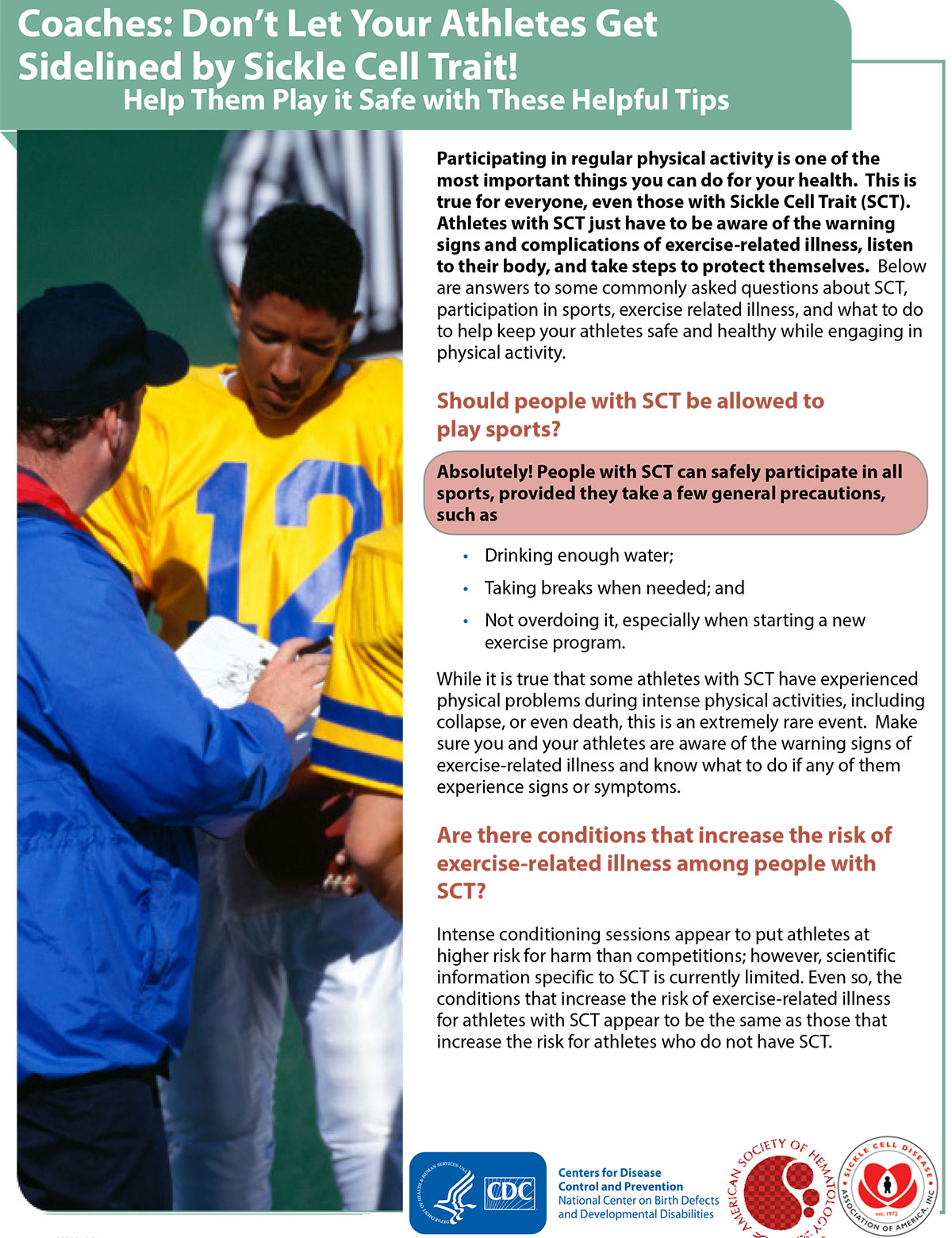In the intricate tapestry of athleticism, the narrative of athletes grappling with sickle cell anemia presents a rich tableau of resilience, determination, and cultural complexity. This discussion will navigate the multifaceted relationship between athletic performance and sickle cell anemia, addressing the prevailing myths while examining the cultural relativism that influences perceptions and experiences of those afflicted by this genetic condition. Are we, in our fervent admiration for athletic prowess, inadvertently sidelining these athletes with preconceptions that overlook their potential?
The journey begins with an understanding of sickle cell anemia — a hereditary disorder characterized by abnormal hemoglobin that results in distorted, sickle-shaped red blood cells. These irregular cells impede blood flow, leading to pain episodes, organ damage, and increased susceptibility to infections. For many, the condition manifests in varying degrees of severity, demanding a nuanced appreciation of how it affects individuals both physically and psychologically.
When we delve into the world of sports, it is imperative to question the prevailing stereotypes surrounding sickle cell anemia. Athletes with this condition have often been labeled as fragile or prone to incapacitating crises. Such labels foster a culture of fear and exclusion. However, it is crucial to recognize the strength and tenacity exhibited by many athletes who successfully defy these limitations. This is where the perspective of cultural relativism becomes invaluable.
Cultural relativism posits that beliefs and practices should be understood based on the cultural context from which they emerge. Within the realm of athletic performance, this means acknowledging the varying attitudes towards sickle cell anemia across different cultures. For instance, some cultures might view the condition as a significant handicap, thereby discouraging individuals from pursuing rigorous sports. Conversely, other cultures may celebrate the spirit of perseverance, encouraging athletes to exploit every opportunity for competition regardless of their health challenges.
The stories of athletes such as Haile Gebrselassie, who has spoken out about managing his sickle cell trait, highlight how personal narratives can challenge the dominant discourse surrounding this condition. There exists a spectrum of experiences, and each individual’s ability to navigate their health is influenced by societal perceptions, healthcare access, and personal determination. As we reflect on Gebrselassie’s achievements, we might ponder: how do cultural stereotypes shape the paths of athletes with sickle cell anemia? What responsibilities do coaches and sponsors have in facilitating inclusivity?
To further dissect these issues, let us evaluate the access to information and resources available to athletes diagnosed with sickle cell anemia. In a society increasingly focused on performance metrics and physical prowess, the lack of awareness and misconceptions about sickle cell can create additional hurdles. Coaches, school administrations, and even teammates might operate under the assumption that any athlete with a history of sickle cell episodes should refrain from competitive sports. This misapprehension can marginalize talented individuals who simply require tailored training protocols and medical oversight. With proper education, management strategies can be developed, allowing these athletes not just to participate but to excel.
Moreover, it is essential to explore the role of policy-making in shaping the athletic landscape for those with sickle cell anemia. Educational institutions and sports organizations must establish guidelines that advocate for the inclusion of athletes with various health challenges. Prevention programs that educate coaches about sickle cell traits could foster an environment where proactive measures and adaptive techniques are prioritized, minimizing the risks while maximizing participation.
Nevertheless, this call for change does not exist in a vacuum. The stigmatization of chronic health conditions persists, often resulting in social alienation. Athletes grappling with sickle cell anemia may encounter skepticism not just in sports but also in broader social contexts. The weight of these expectations can influence self-esteem and mental well-being. Thus, support networks are vital in building resilience. Mentorship programs and community initiatives can empower these athletes, enabling them to share their stories, thereby reshaping perceptions within their respective cultures.
As we analyze these dynamics further, it is pertinent to acknowledge the medical advancements that enhance the quality of life for individuals with sickle cell anemia. Innovations in treatment and management have made it possible for many to live active and fulfilling lives. These advancements serve as a counterpoint to the age-old narratives that label such individuals as unable to participate in high-intensity sports. With this newfound optimism, one may ask: could the trajectory of an athlete with sickle cell anemia shift in the coming generations, transforming them from sidelined individuals to leaders in sport and health advocacy?
In conclusion, the intersection of athleticism and sickle cell anemia presents a complex landscape where cultural beliefs, medical understanding, and individual narratives converge. By approaching this subject with cultural relativism, we open ourselves to the potential for inclusivity and empowerment, challenging the myths that have historically marginalized these athletes. It is time to dismantle the paradigms that confine them, celebrating the tenacity and achievements of those who continue to push the boundaries of what is possible. The question remains — are we ready to embrace a future where athletes with sickle cell anemia not only compete but thrive?
